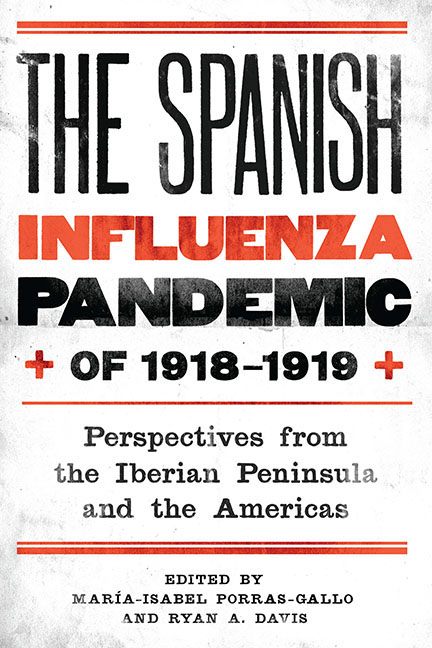 The Spanish Influenza Pandemic of 1918–1919
The Spanish Influenza Pandemic of 1918–1919 from Part Three - Interpreting the Epidemic: Sociocultural Dynamics and Perspectives
Published online by Cambridge University Press: 14 March 2018
Here lies half of Spain, it died of the other half.
—Mariano José de Larra, “El dia de difuntos de 1836” (The day of the dead 1836)Medicine is a social science, and politics is nothing else but medicine on a large scale.
—Rudolf Virchow, Die Medizinische Reform (Medical reform)Although Spain remains nominally connected to the 1918–19 Spanish influenza epidemic, scholars often seek to minimize the connection between the country and the disease, preferring instead to emphasize its international scope. Thus Beatriz Echeverri, one of the few who has written on Spain's experience of the epidemic to a broader scholarly audience, states categorically, “Spanish flu had nothing ‘Spanish’ about it.” Considering that the Spanish flu neither originated in Spain, nor was it confined only to the country, she is right. Yet, in the rush to reduce Spain's relation to the disease to a function of the name the country and the disease share in common, something of Spain's unique contribution to the social history of the epidemic has been lost. If, from an epidemiological standpoint, the Spanish flu had nothing to do with Spain, the same cannot be said of it from a discursive standpoint.
It is now widely accepted that the Spanish flu gets its name from the news coverage the epidemic received in Spain. In contrast to its counterparts in countries embroiled in World War I, the Spanish press, as a result of the nation's neutrality, reported on the epidemic early and extensively. This source of documentary material thus constitutes one of the richest archives for accessing period responses to the epidemic. Nevertheless, though most scholars of the Spanish flu can probably point to this news coverage as the source of the epidemic's name, very few have studied it. Moreover, those who have tend to use it as a means of recreating the epidemic events as they occurred—retracing what narratologists would call the story of the epidemic. In this, they resemble examples of what Howard Phillips calls the “first wave” of Spanish flu scholarship, namely, studies that have “paid particular attention to exploring the spread and deadly impact of the disease and getting it recognized as a topic worthy of serious study by historians.”
To save this book to your Kindle, first ensure [email protected] is added to your Approved Personal Document E-mail List under your Personal Document Settings on the Manage Your Content and Devices page of your Amazon account. Then enter the ‘name’ part of your Kindle email address below. Find out more about saving to your Kindle.
Note you can select to save to either the @free.kindle.com or @kindle.com variations. ‘@free.kindle.com’ emails are free but can only be saved to your device when it is connected to wi-fi. ‘@kindle.com’ emails can be delivered even when you are not connected to wi-fi, but note that service fees apply.
Find out more about the Kindle Personal Document Service.
To save content items to your account, please confirm that you agree to abide by our usage policies. If this is the first time you use this feature, you will be asked to authorise Cambridge Core to connect with your account. Find out more about saving content to Dropbox.
To save content items to your account, please confirm that you agree to abide by our usage policies. If this is the first time you use this feature, you will be asked to authorise Cambridge Core to connect with your account. Find out more about saving content to Google Drive.